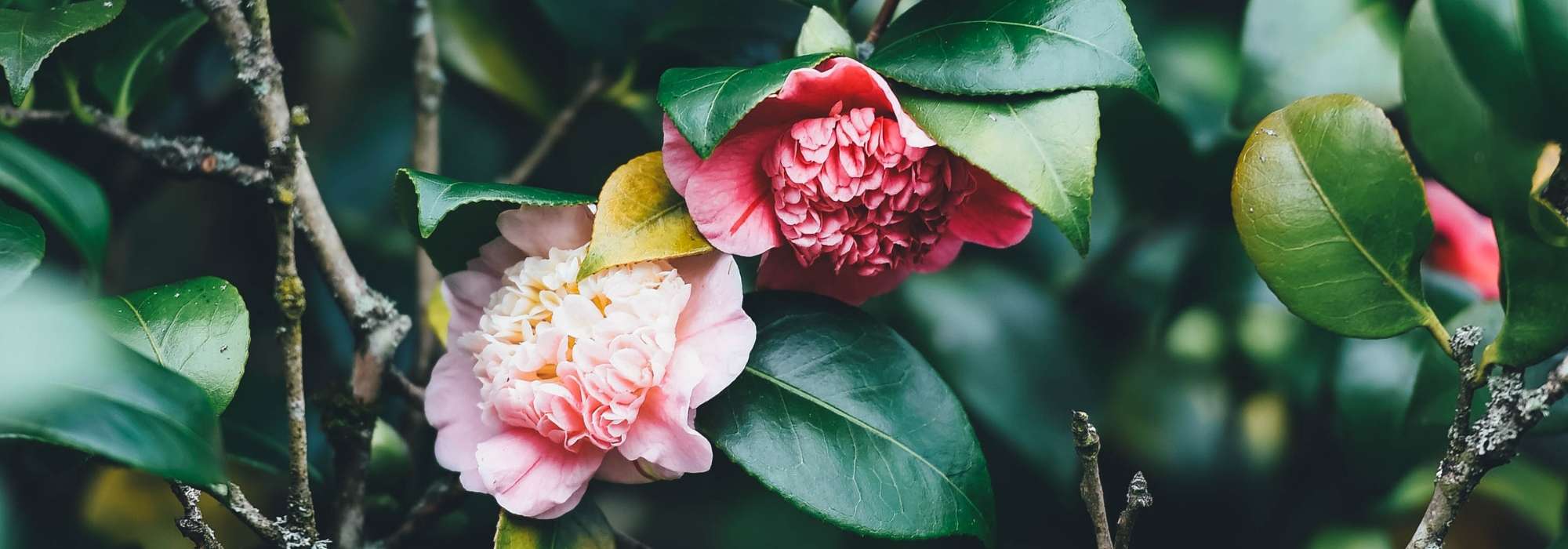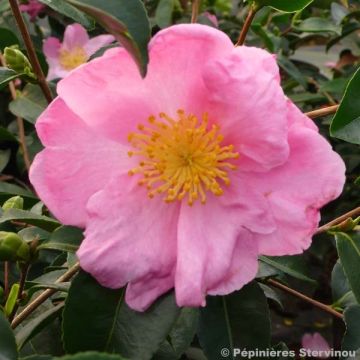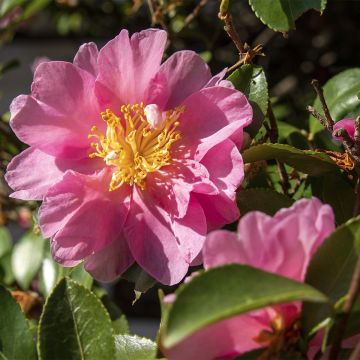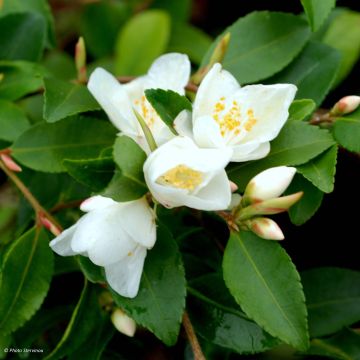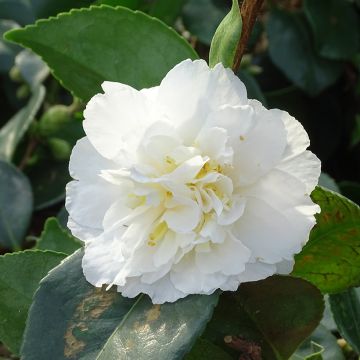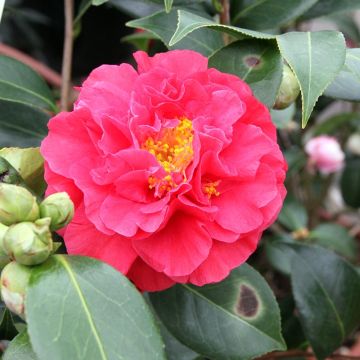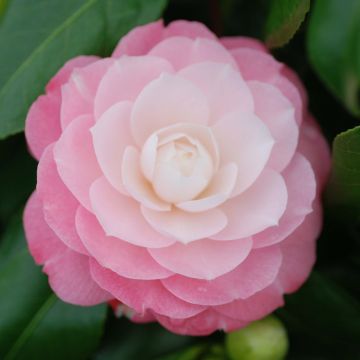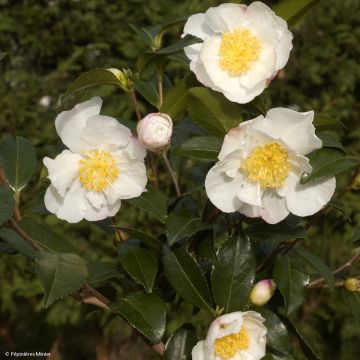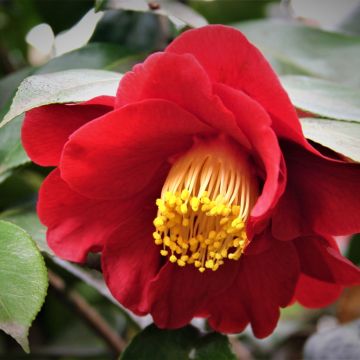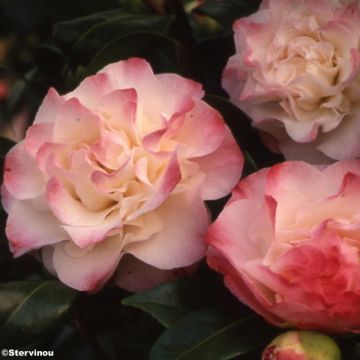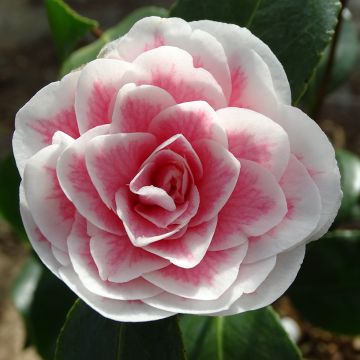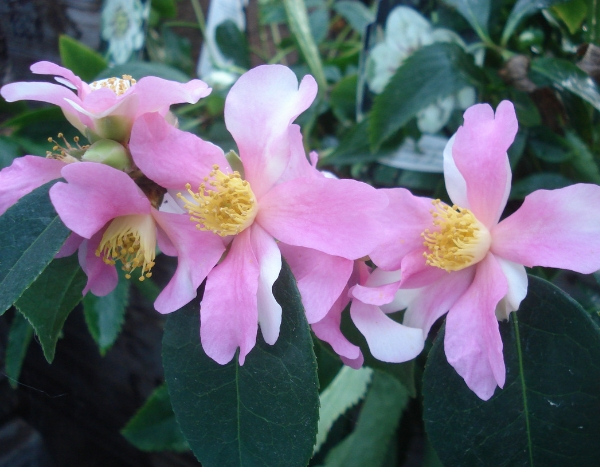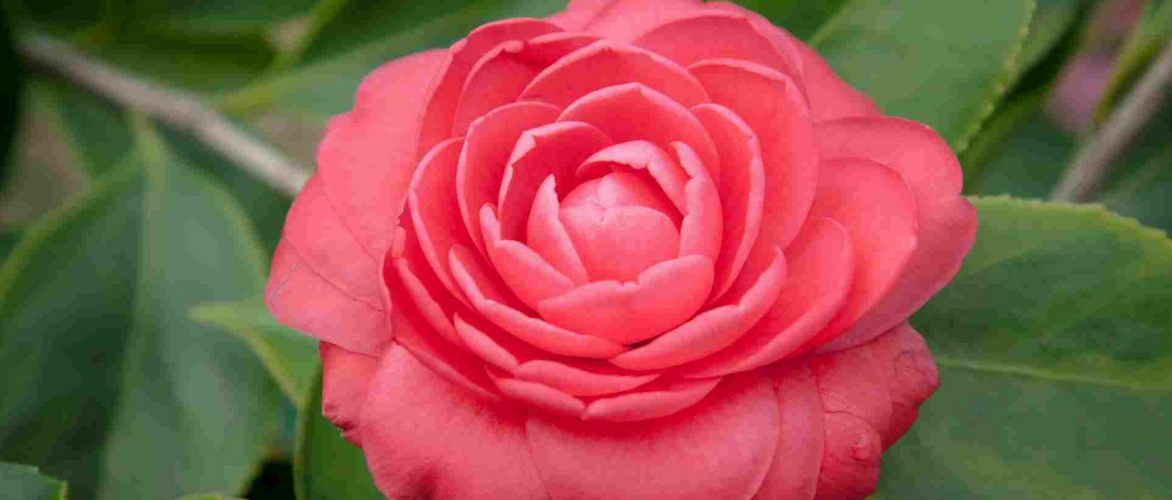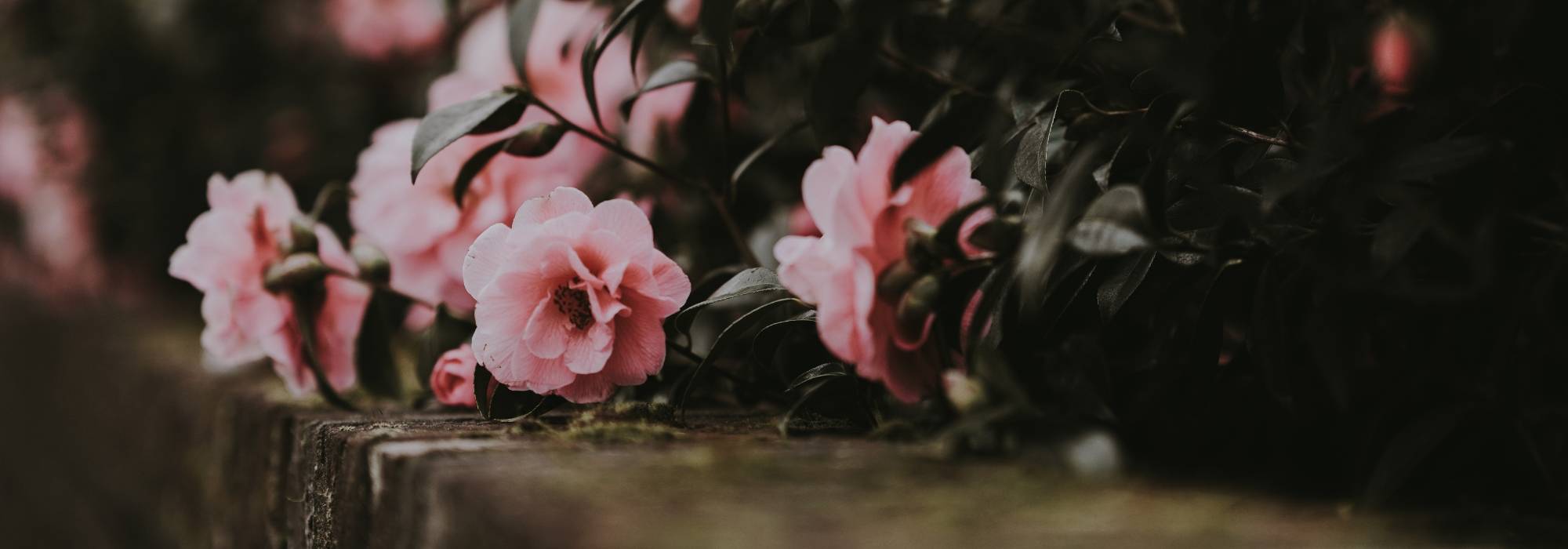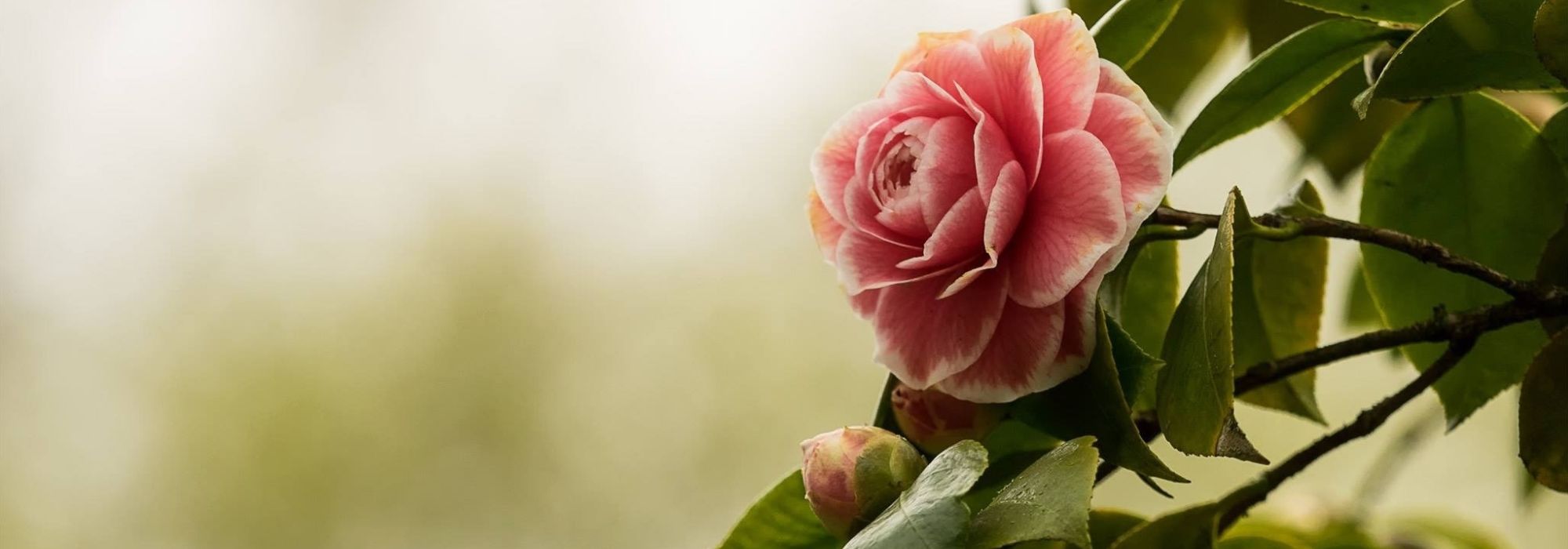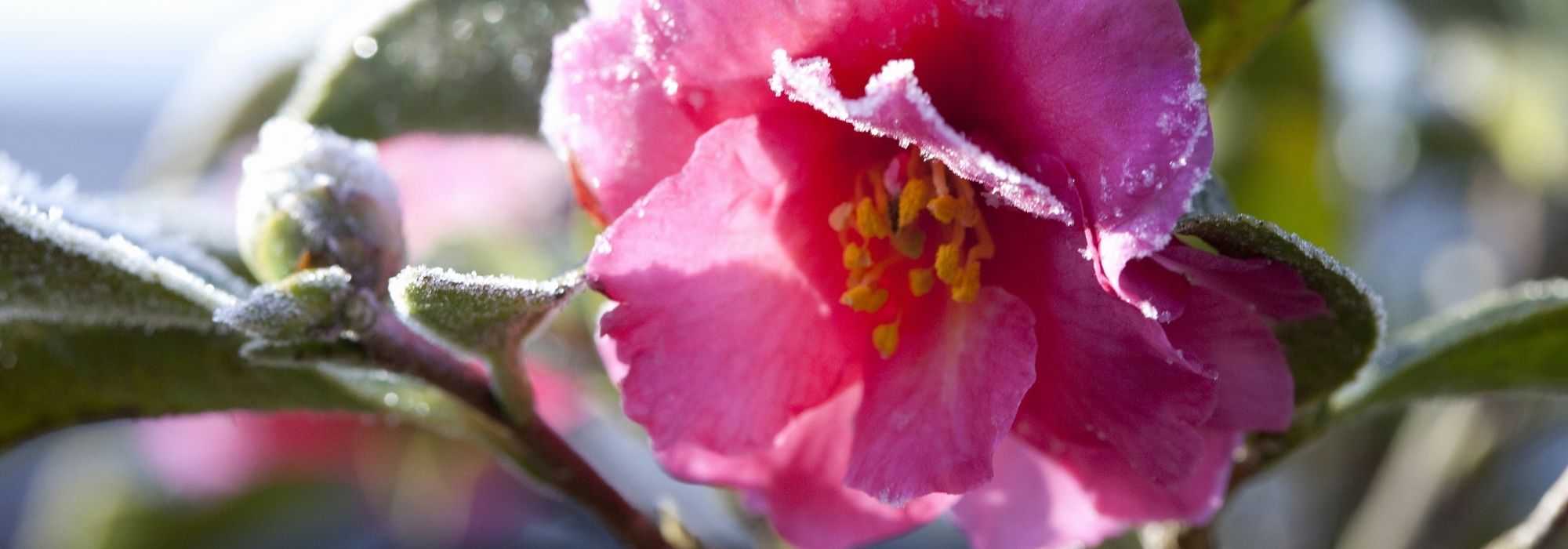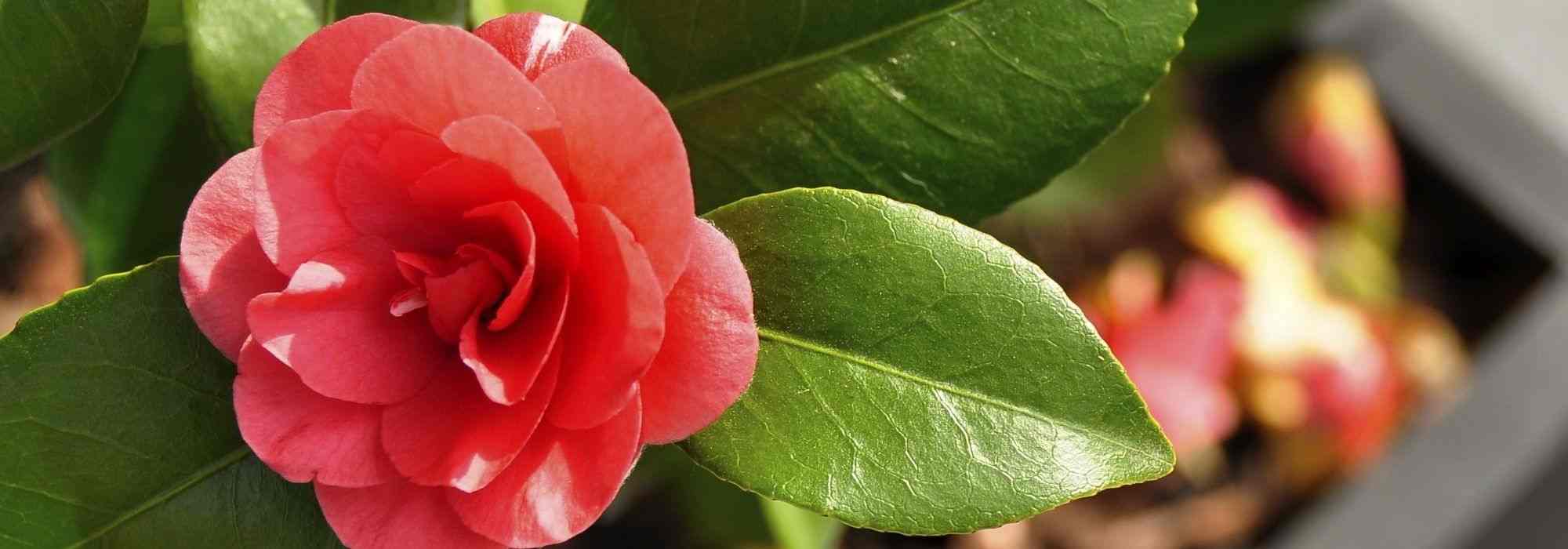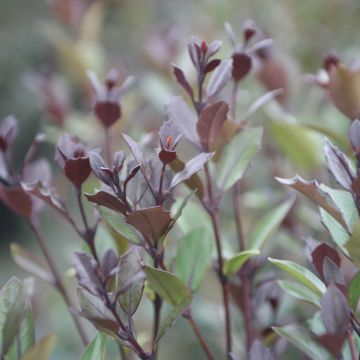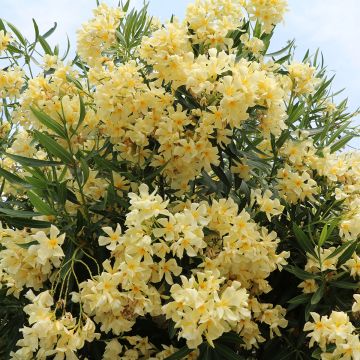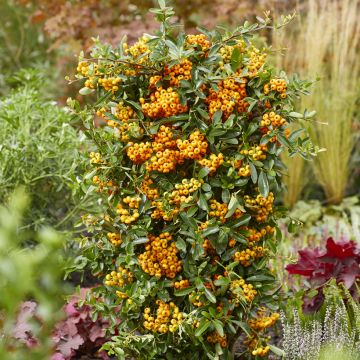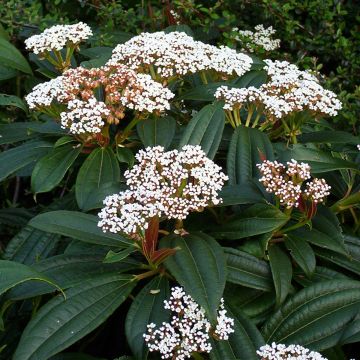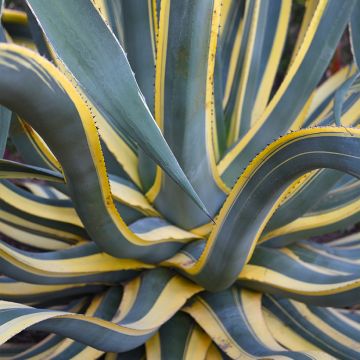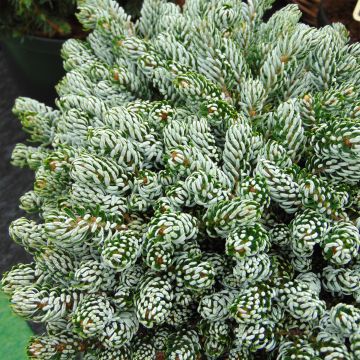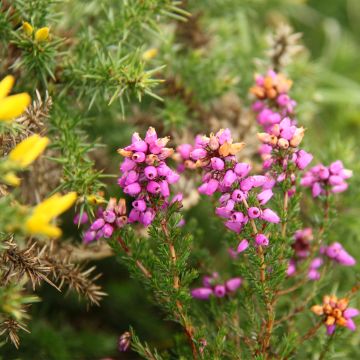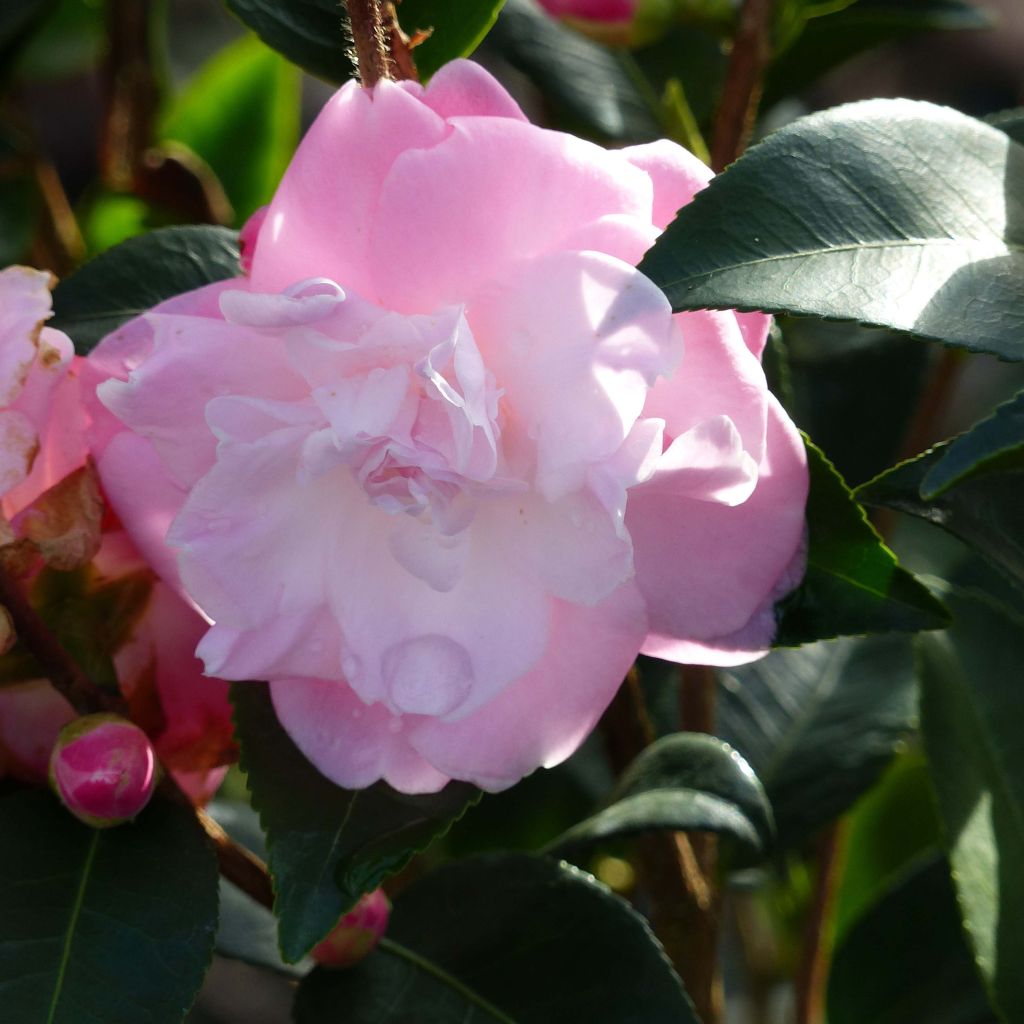

Camellia transnokoensis Sweet Jane
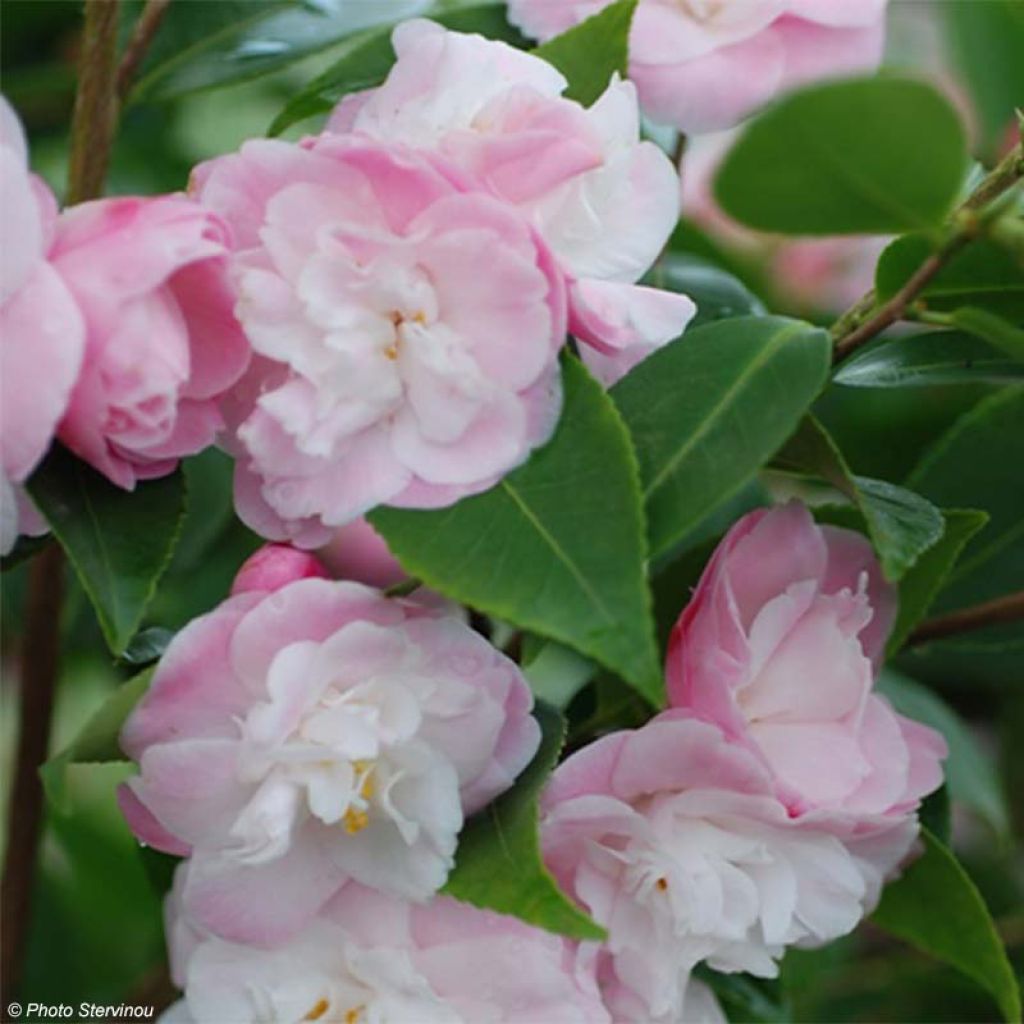

Camellia transnokoensis Sweet Jane
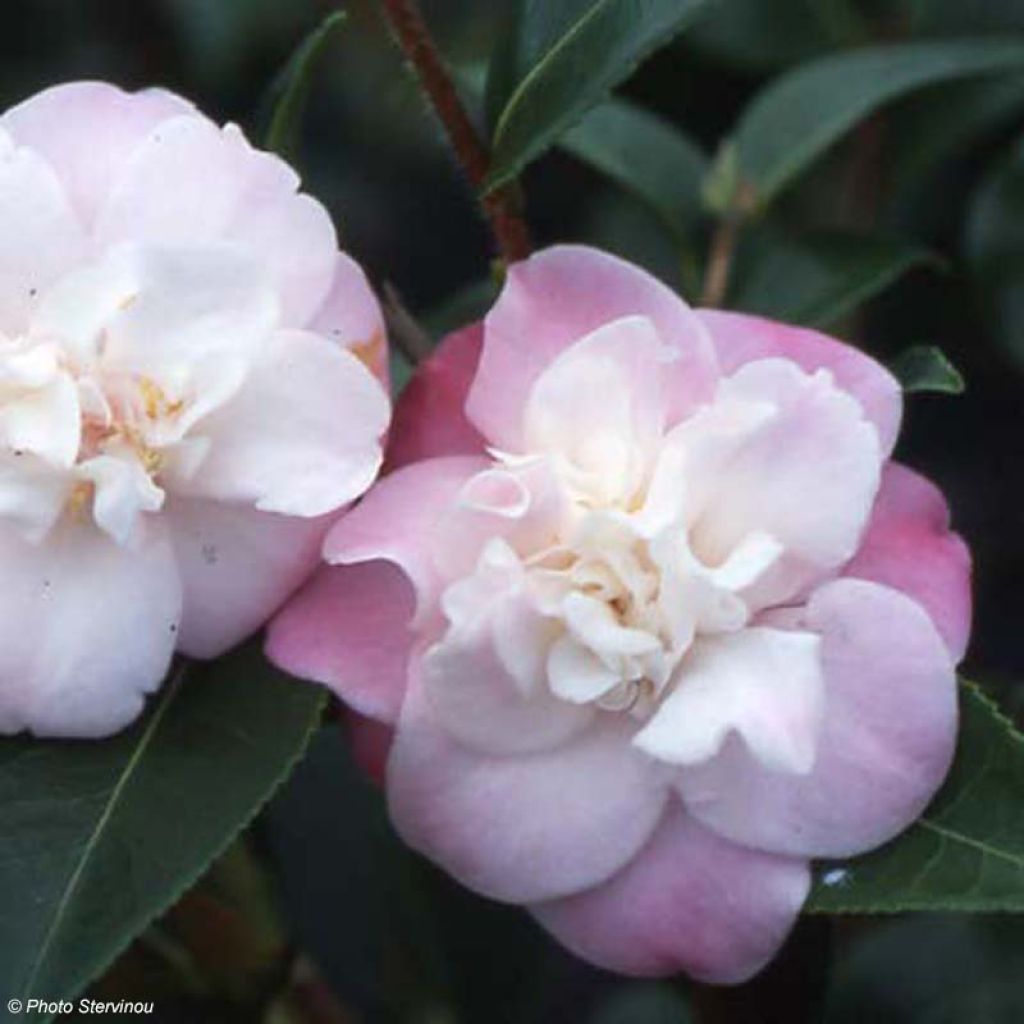

Camellia transnokoensis Sweet Jane
View more pictures
Hide images

Jocelyne S.

I'm sorry, but there is no text provided in the customer review for the Camellia 'Sweet Jane'. If you have the specific text of the review that you would like me to translate into British English, please provide it so that I can assist you with the transla
Jocelyne S. • 75 FR
Camellia transnokoensis Sweet Jane
Camellia x transnokoensis Sweet Jane
Beautifully shaped and healthy young plant. Only one regret, it doesn't have any floral buds, so I will have to wait a year before seeing its flowers.
Jocelyne, 06/03/2023
Special offer!
Receive a €20 voucher for any order over €90 (excluding delivery costs, credit notes, and plastic-free options)!
1- Add your favorite plants to your cart.
2- Once you have reached €90, confirm your order (you can even choose the delivery date!).
3- As soon as your order is shipped, you will receive an email containing your voucher code, valid for 3 months (90 days).
Your voucher is unique and can only be used once, for any order with a minimum value of €20, excluding delivery costs.
Can be combined with other current offers, non-divisible and non-refundable.
Home or relay delivery (depending on size and destination)
Schedule delivery date,
and select date in basket
This plant carries a 24 months recovery warranty
More information
We guarantee the quality of our plants for a full growing cycle, and will replace at our expense any plant that fails to recover under normal climatic and planting conditions.

Would this plant suit my garden?
Set up your Plantfit profile →
Description
Sweet Jane Camellia is a bushy plant with a flexible habit, very natural-looking, which perfectly embodies the appeal of this more rustic variety of camellia. Endowed with incredible charm, it produces abundant small flowers in early spring that resemble tiny roses, doll flowers that defy the April showers. Starting off as pink buds, they open up to a pale pink colour with a slightly deeper pink centre, adorning beautiful evergreen foliage with a delightful bronze-copper hue when budburst takes place. Its moderate growth is well suited for creating flowering hedges or growing in containers on the terrace.
This horticultural variety is the result of cross-breeding with Camellia transnokoensis, a botanical species with evergreen foliage native to mountainous areas of Taiwan. Like all camellias, it belongs to the family of Theaceae. 'Sweet Jane' has an overall erect habit, more tall than wide, and dense vegetation supported by flexible branches. Its growth is slow: by age 10, it will reach approximately 1 metre (3.4 feet) in height and 80 cm (32 in) in width. An adult plant will typically reach an average height of 1.20 m (4 ft) and a width of 90 cm (35 in), depending on the growing conditions. It starts flowering as early as January in mild climates, peaking in March-April. 'Sweet Jane' produces a large quantity of very small double flowers, in two shades of pink, with a diameter of approximately 3-4 cm (1.6 in). Its young leaves are tinted with bronze-copper, then they take on a light green colour when mature. They measure 5 to 7 cm (2 to 3 in) in length and have a slightly glossy appearance on the upper surface. Hardy down to -12°C, this variety is grown in partial shade or full sun, sheltered from cold winds. It thrives in acidic, humus-rich, moist, and light soils.
Plant the 'Sweet Jane' Camellia in a low country-style hedge or in an ericaceous bed alongside azaleas, Skimmia, Japanese quince, and heathers. Plant it in autumn with some spring bulbs e.g. tulips and daffodils for a magnificent and colourful display. Its compact size also allows it to be grown in containers for many years. Place it on a partially shaded terrace, alongside a wall, protected from cold and drying winds.
The name Camellia was given to the plant in 1735 by the Swedish naturalist Carl Von Linnaeus, in tribute to Georg Josef Kamel (Latinized as « Camellus »), an apothecary in the service of the Jesuits in the Philippines in the late 17th century. It was not until 1792 that the Camellia arrived in Europe.
Camellia transnokoensis Sweet Jane in pictures
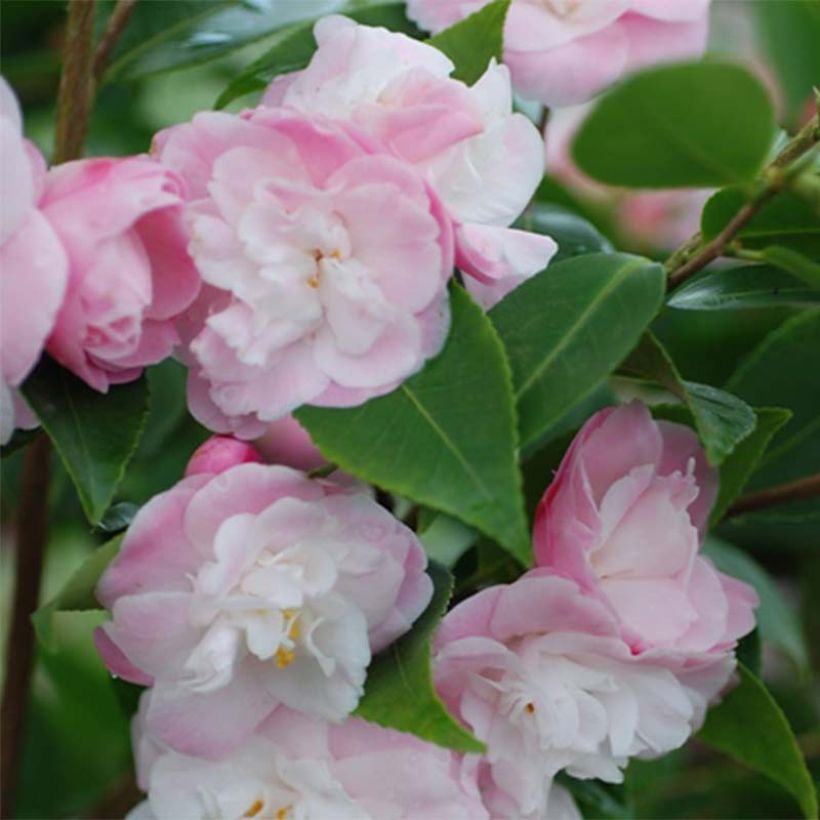

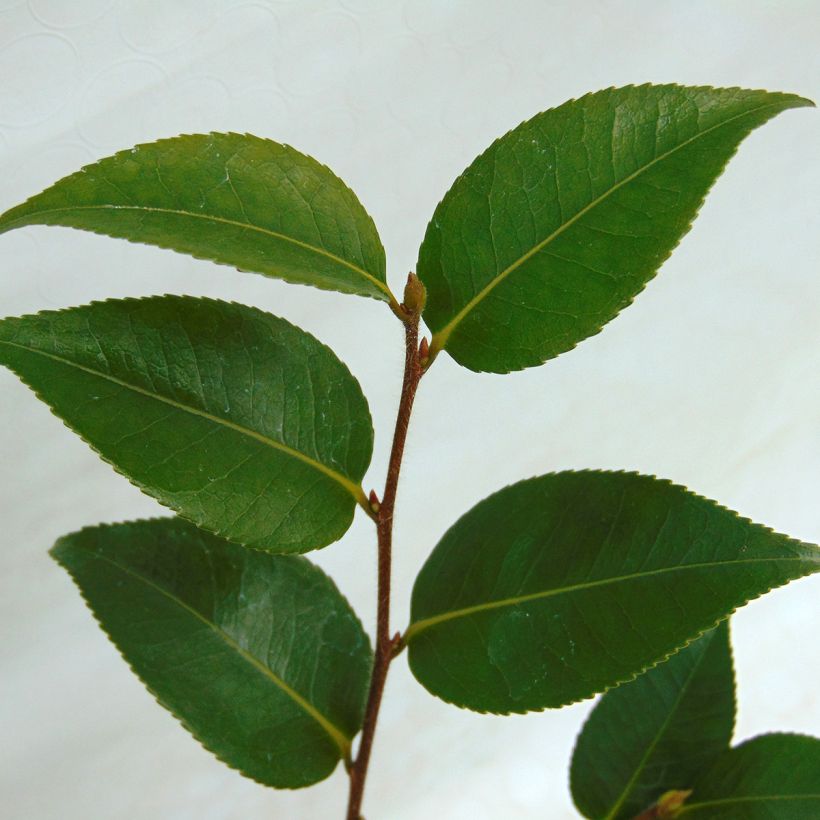

Plant habit
Flowering
Foliage
Botanical data
Camellia
x transnokoensis
Sweet Jane
Theaceae
Cultivar or hybrid
Other Camellias A to Z
View all →Planting and care
Camellia 'Sweet Jane' can be placed in a partially shaded or sunny site, sheltered from cold and drying winds. You can also grow it in full sun, but the roots need to stay cool. Plant it in a cool, humus-bearing, acid to neutral, fertile, and well-drained soil. Do not plant the bush too deeply; the top of the root ball should be covered with 3 cm (1.2 in) of soil. In winter cover it with a 5 to 7 cm (2 to 2 in) thick mulch made of leaf compost and crushed bark. Beware of late frosts that can damage the flowers and buds. During dry periods, water the bush to prevent the dropping of flower buds.
Planting period
Intended location
Care
Planting & care advice
-
, onOrder confirmed
Reply from on Promesse de fleurs
Similar products
Haven't found what you were looking for?
Hardiness is the lowest winter temperature a plant can endure without suffering serious damage or even dying. However, hardiness is affected by location (a sheltered area, such as a patio), protection (winter cover) and soil type (hardiness is improved by well-drained soil).

Photo Sharing Terms & Conditions
In order to encourage gardeners to interact and share their experiences, Promesse de fleurs offers various media enabling content to be uploaded onto its Site - in particular via the ‘Photo sharing’ module.
The User agrees to refrain from:
- Posting any content that is illegal, prejudicial, insulting, racist, inciteful to hatred, revisionist, contrary to public decency, that infringes on privacy or on the privacy rights of third parties, in particular the publicity rights of persons and goods, intellectual property rights, or the right to privacy.
- Submitting content on behalf of a third party;
- Impersonate the identity of a third party and/or publish any personal information about a third party;
In general, the User undertakes to refrain from any unethical behaviour.
All Content (in particular text, comments, files, images, photos, videos, creative works, etc.), which may be subject to property or intellectual property rights, image or other private rights, shall remain the property of the User, subject to the limited rights granted by the terms of the licence granted by Promesse de fleurs as stated below. Users are at liberty to publish or not to publish such Content on the Site, notably via the ‘Photo Sharing’ facility, and accept that this Content shall be made public and freely accessible, notably on the Internet.
Users further acknowledge, undertake to have ,and guarantee that they hold all necessary rights and permissions to publish such material on the Site, in particular with regard to the legislation in force pertaining to any privacy, property, intellectual property, image, or contractual rights, or rights of any other nature. By publishing such Content on the Site, Users acknowledge accepting full liability as publishers of the Content within the meaning of the law, and grant Promesse de fleurs, free of charge, an inclusive, worldwide licence for the said Content for the entire duration of its publication, including all reproduction, representation, up/downloading, displaying, performing, transmission, and storage rights.
Users also grant permission for their name to be linked to the Content and accept that this link may not always be made available.
By engaging in posting material, Users consent to their Content becoming automatically accessible on the Internet, in particular on other sites and/or blogs and/or web pages of the Promesse de fleurs site, including in particular social pages and the Promesse de fleurs catalogue.
Users may secure the removal of entrusted content free of charge by issuing a simple request via our contact form.
The flowering period indicated on our website applies to countries and regions located in USDA zone 8 (France, the United Kingdom, Ireland, the Netherlands, etc.)
It will vary according to where you live:
- In zones 9 to 10 (Italy, Spain, Greece, etc.), flowering will occur about 2 to 4 weeks earlier.
- In zones 6 to 7 (Germany, Poland, Slovenia, and lower mountainous regions), flowering will be delayed by 2 to 3 weeks.
- In zone 5 (Central Europe, Scandinavia), blooming will be delayed by 3 to 5 weeks.
In temperate climates, pruning of spring-flowering shrubs (forsythia, spireas, etc.) should be done just after flowering.
Pruning of summer-flowering shrubs (Indian Lilac, Perovskia, etc.) can be done in winter or spring.
In cold regions as well as with frost-sensitive plants, avoid pruning too early when severe frosts may still occur.
The planting period indicated on our website applies to countries and regions located in USDA zone 8 (France, United Kingdom, Ireland, Netherlands).
It will vary according to where you live:
- In Mediterranean zones (Marseille, Madrid, Milan, etc.), autumn and winter are the best planting periods.
- In continental zones (Strasbourg, Munich, Vienna, etc.), delay planting by 2 to 3 weeks in spring and bring it forward by 2 to 4 weeks in autumn.
- In mountainous regions (the Alps, Pyrenees, Carpathians, etc.), it is best to plant in late spring (May-June) or late summer (August-September).
The harvesting period indicated on our website applies to countries and regions in USDA zone 8 (France, England, Ireland, the Netherlands).
In colder areas (Scandinavia, Poland, Austria...) fruit and vegetable harvests are likely to be delayed by 3-4 weeks.
In warmer areas (Italy, Spain, Greece, etc.), harvesting will probably take place earlier, depending on weather conditions.
The sowing periods indicated on our website apply to countries and regions within USDA Zone 8 (France, UK, Ireland, Netherlands).
In colder areas (Scandinavia, Poland, Austria...), delay any outdoor sowing by 3-4 weeks, or sow under glass.
In warmer climes (Italy, Spain, Greece, etc.), bring outdoor sowing forward by a few weeks.






























